(A trip from 1993)
I spent about half a year travelling around Central America, from Mexico all the way down to Panama, crossing to Colombia and Venezela as well. In Mexico, Guatemala and Honduras I went to see the major Maya pyramids which are truly spectacular.





At that time (in 1993) you could still climb the pyramids and in some places even go inside. This is impossible these days; however, when I re-visited some of the places in 2023, things looked still nice.


The Maya civilisation thrived from about 750 BC in today’s southeastern Mexico, Guatemala, Belize, Honduras and El Salvador and collapsed roughly in the 10th century AD, with the last Maya city (Nojpeten) colonised by the Spanish Empire in 1697. Today about 6 million Maya descendants live in the region.
The Mayas were far ahead in art, architecture, astronomy and mathematics, and the Maya script is the most sophisticated and highly developed writing system in the pre-Columbian Americas.
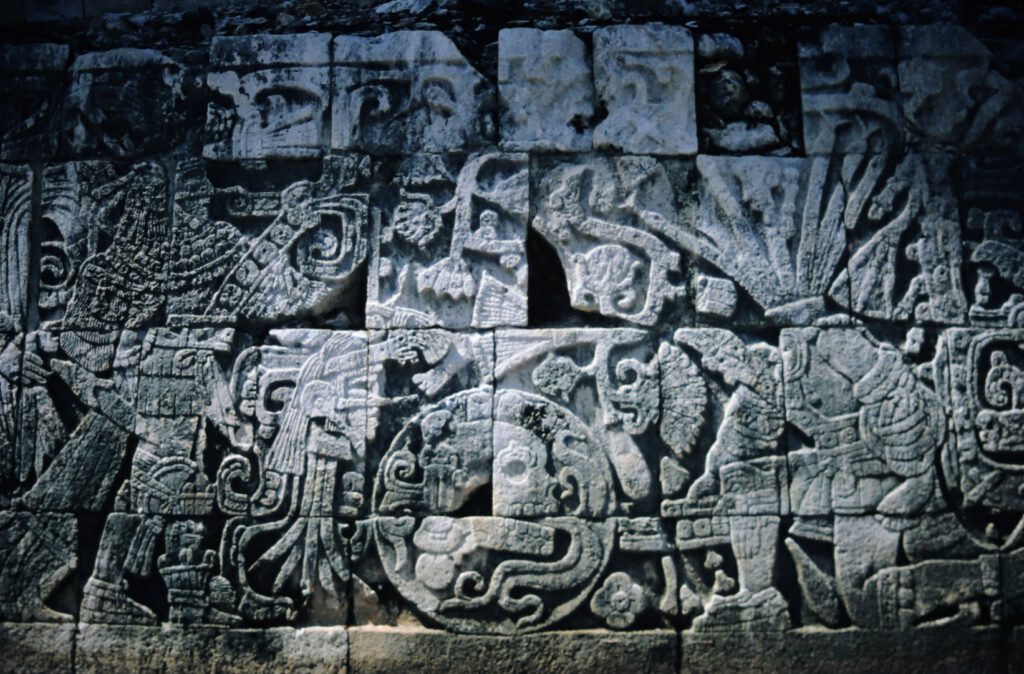

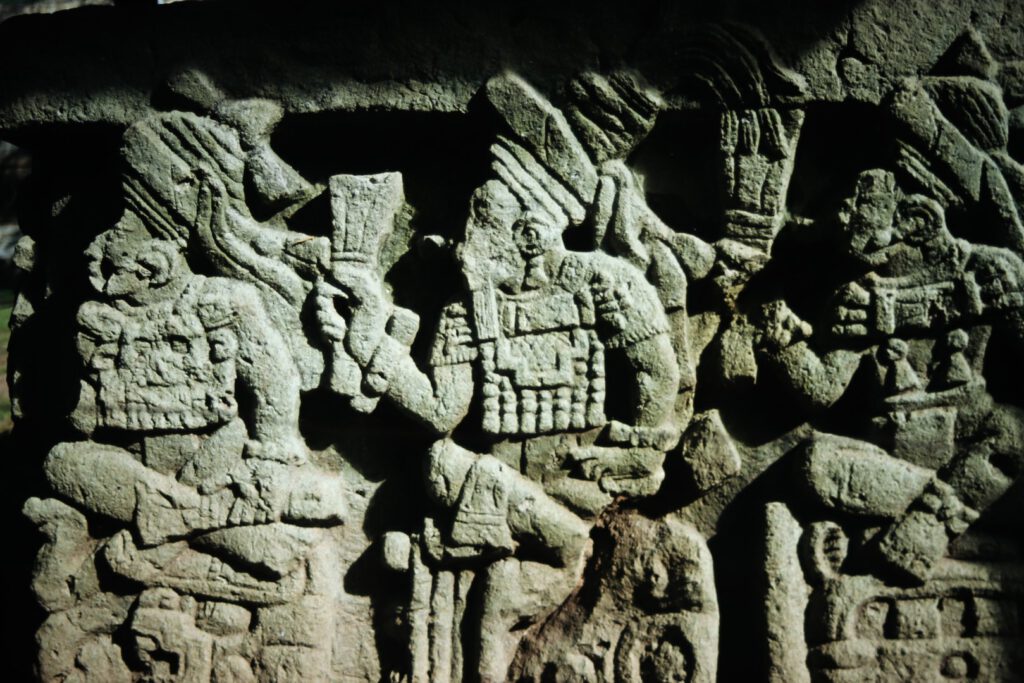

The most impressive Maya site that I have seen is Tikal in Guatemala. I met Brewster, an American guy on my way up north to Flores (a small city close to Tikal) from Guatemala City, the capital. We used buses and trucks to get there, mostly sitting on top of the buses and enjoying the view.
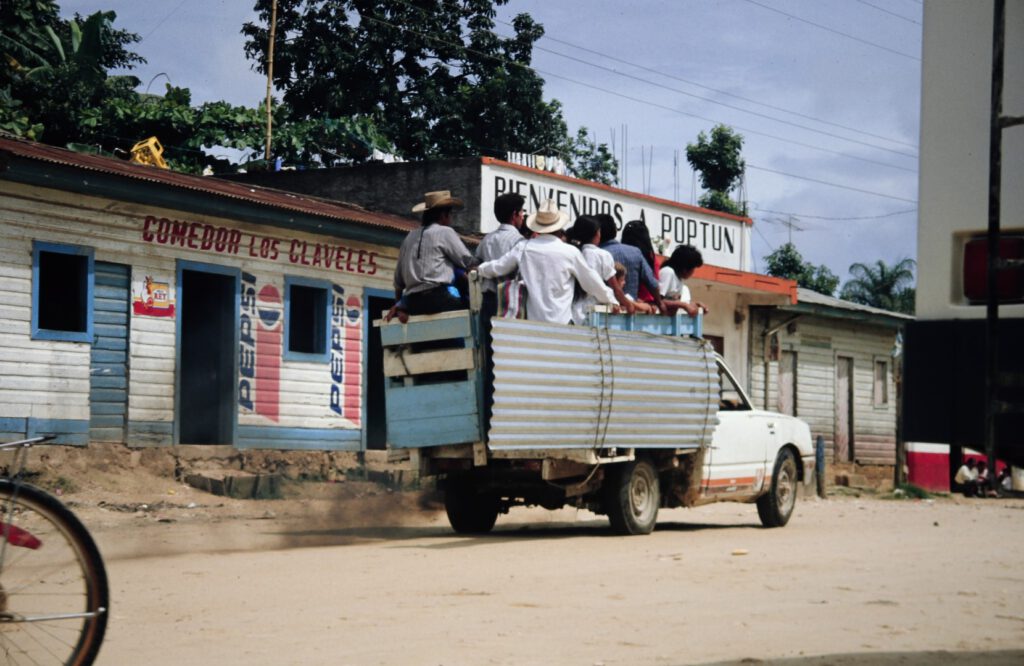


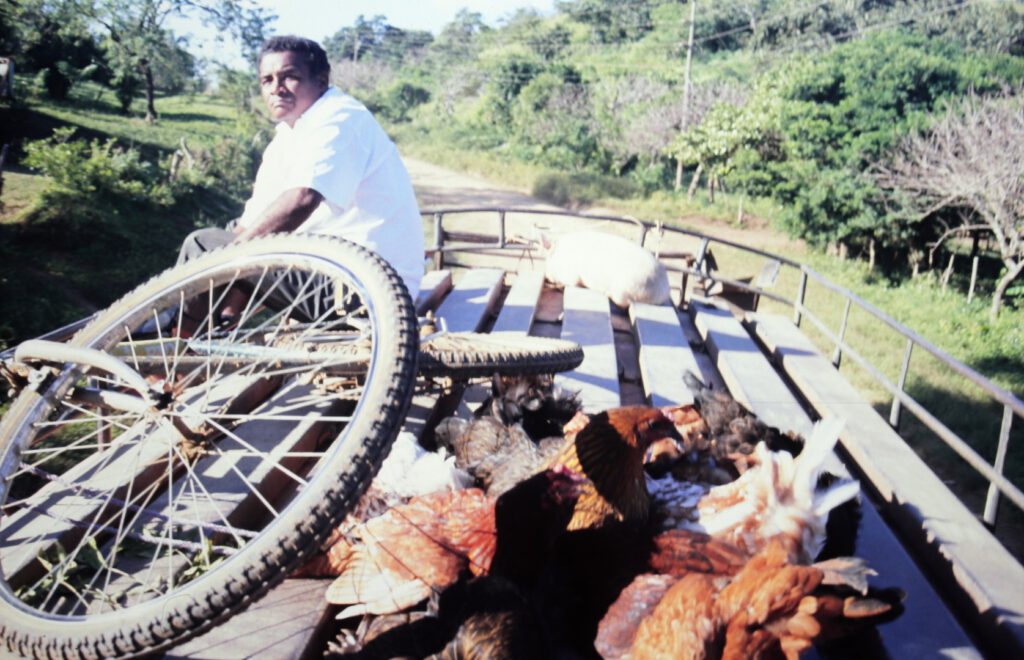
Tikal was one of the most powerful kingdoms of the ancient Maya. The site dates back to the 4th century BC and reached its peak at around 200 to 900 AD. After that no new major monuments were built at Tikal and the city declined. It was abandoned by the end of the 10th century. It is estimated that between 10.000 and 90.000 people lived in Tikal at its height.



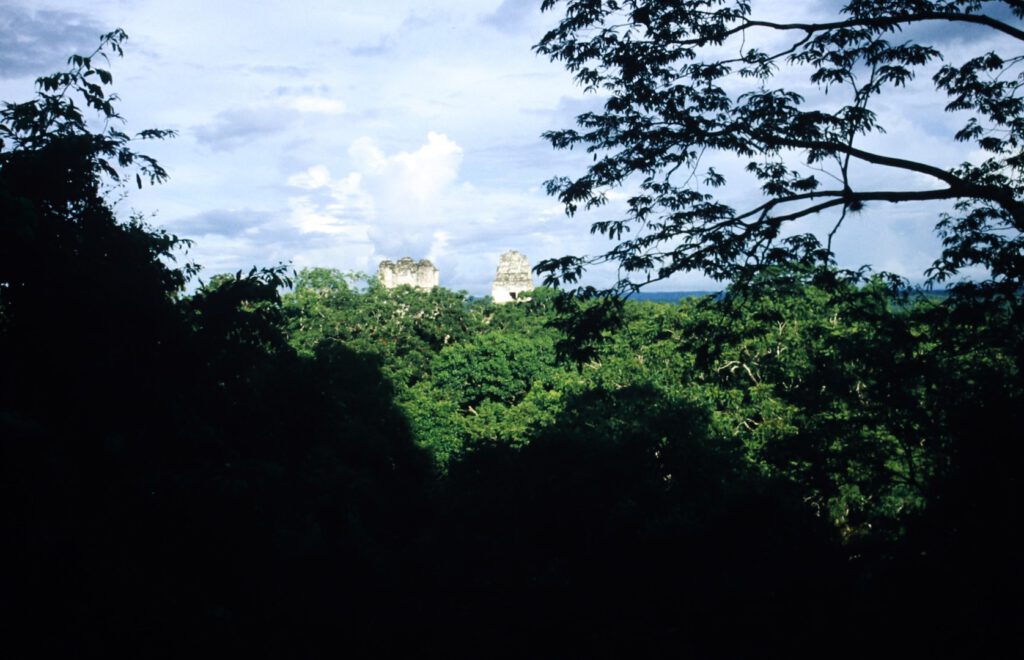
Brewster and myself climbed on one of the temples in the late afternoon and spent the night on top, listening to the jungle sounds around us, watching the moon and feeling like explorers. A great (though illegal) experience!
However, coming back to Flores the next day, we wanted more. I had done some research in a library in Guatemala City and had come across a Maya site called “El Mirador” (“the lookout”). This was supposed to be north of Tikal, in the middle of the jungle, and not restored yet or even properly researched. It was also written that El Mirador held one of the largest pyramids in the world!
Obviously I wanted to see it. When you visit archeological sites today, these are typically taken care of meticulously; in the case of Mayan pyramids with the grass being trimmed regularly etc. Tikal was already a bit different and more adventurous when walking away from the main structures, but still you would see the occasional tour group (and Chichen Itza is totally overrun meanwhile!).
El Mirador was different. It had been discovered in 1885; a first mapping project was briefly done in 1962 and then again in 1978. However, that project ended in 1983, so by the time I was in the area (1993), ten years had gone by, letting the Maya site being overtaken again by the jungle. It was guaranteed that noone else would be there!
Getting there was difficult. Brewster joined me on this trip which was one of the toughest thing I had done so far. In the very early morning we took a boat from Flores across the lake to the north. From there we made it to a small place called Cruce Dos Aguadas about 25 km north; standing on the back of a Pickup truck. The next 45 km we hitched a ride on another Pickup truck with a group of “chicleros” – the guys who climb Chicle trees to harvest its sap which is being used for chewing gum. There were 14 people on the back of a Toyota truck; my legs dangled outside due to lack of space. Although it was a Four Wheel Drive, we had to get out every so often and push the car out of the mud, and in the end we looked like we had crawled through the mud ourselves.

We reached Carmelita, a small village in the middle of nowhere – the last stop accessible by road on the way to El Mirador.

After asking around for a while, we finally found Sebastian, a young man who claimed he knew the way to El Mirador. So we agreed on a price and hired him as guide. We spent a day in Carmelita to give him time for preparations and camped in the backyard of his hut.
The next day the real adventure started. Sebastian had arranged a horse for himself and a second horse for our backpacks, so Brewster and myself had to walk. Jungle all around, and ankle-deep mud, soon turning into knee-deep mud; and at times even deeper. Tons of mosquitos, almost 100% humidity and heat. I had had better days.

On and on we went, spending the night in Chiclero camps, using our water filters to get at least somewhat clean water and eating canned food. The jungle was dangerous, but also exciting and beautiful.




In the end the distance we had to cover was probably not much more than 50 km one way, but trekking in the jungle is a nightmare, and the boredom is even worse. Sometimes Brewster and I talked, then fell silent again for half an hour and then continued with the same topic, as if there had been no interruption. Or I kept myself busy with thinking about long-gone memories, trying to remember each and every little thing. I had spent time in the army, in a parachuting unit, but nothing we had done there had been as exhausting as this trek.
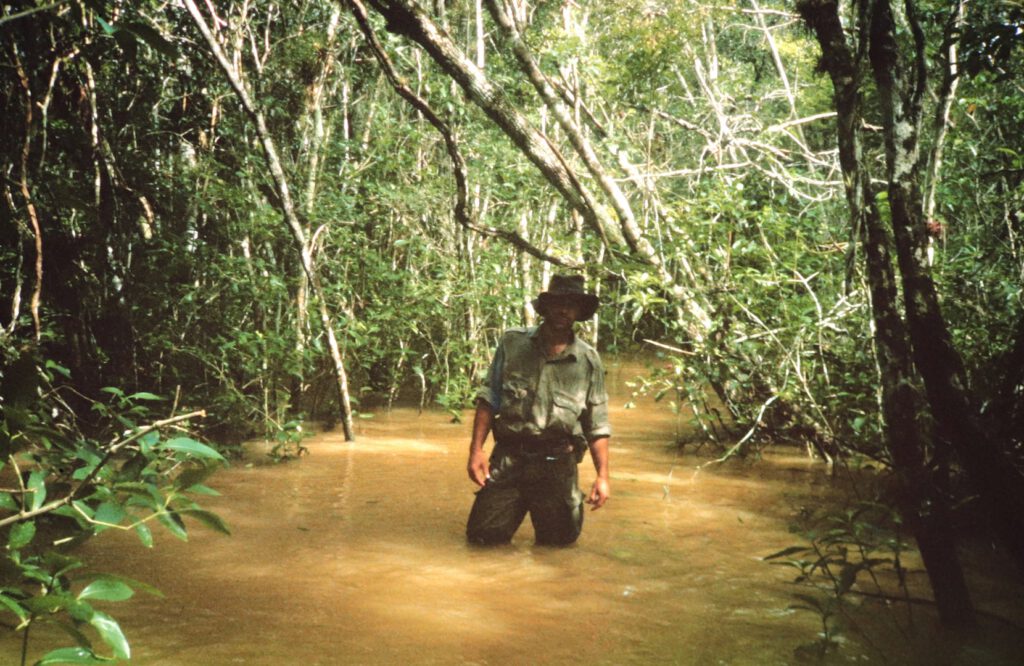
The trek took us several days. My shoes had long given up meanwhile, tearing apart at the back, so I felt like walking in flip-flops. Not the best idea when you have snakes and bugs and beetles all around. But we also saw larger animals such as howler monkeys, wild pigs etc, and lots of butterflies, parrots and other birds.
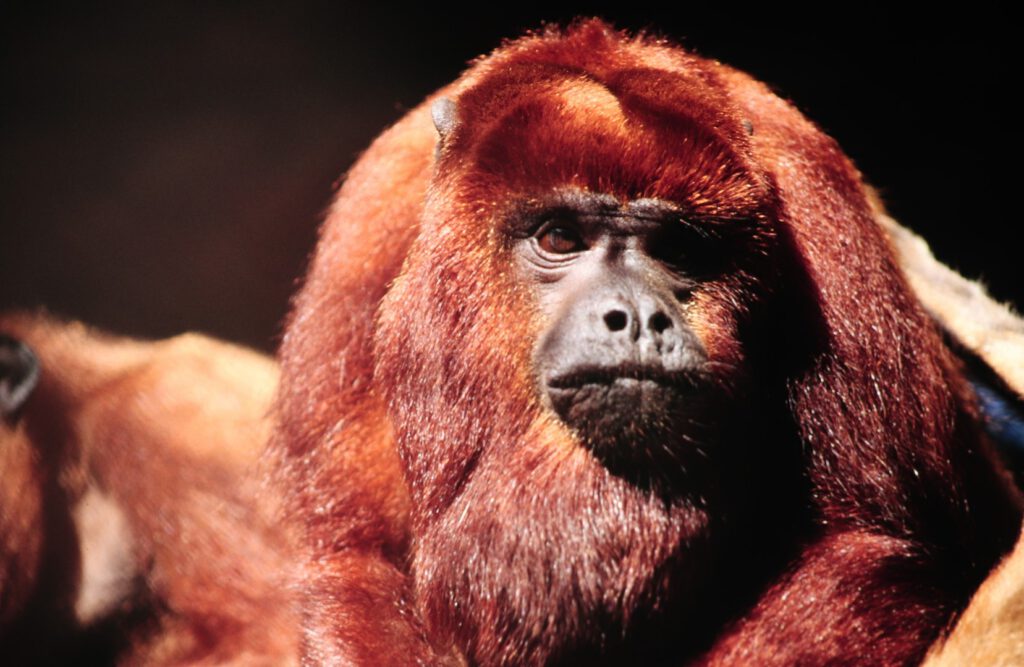


Finally we made it! Sebastian tied the horses to a tree, and gradually we had to climb upwards, until the climb became really steep and we were reached level 3: “Try not to break your legs!” (after level 1: “Try not to get dirty!” and level 2: “Try not to get completely wet!”, which we have both passed already on the first day).
All of a sudden we were on top of the main pyramid of El Mirador, a structure called “La Danta”. This is about 70 meters high and thus one of the largest pyramids in the world! And we didn’t even notice that we had reached it until we were on the very top:

The view was fantastic; you could see other rises in the distance where probably more so far undiscovered Maya pyramids are hidden. New Maya sites are discoved even these days every once in a while, and only God knows how many undiscovered ruins are still out there!

We spent a few days in the area, using a hut that had been abandoned long ago by scientists. Also there we had to cope with bugs and scorpions and other uninvited guests, but at least it was dry!
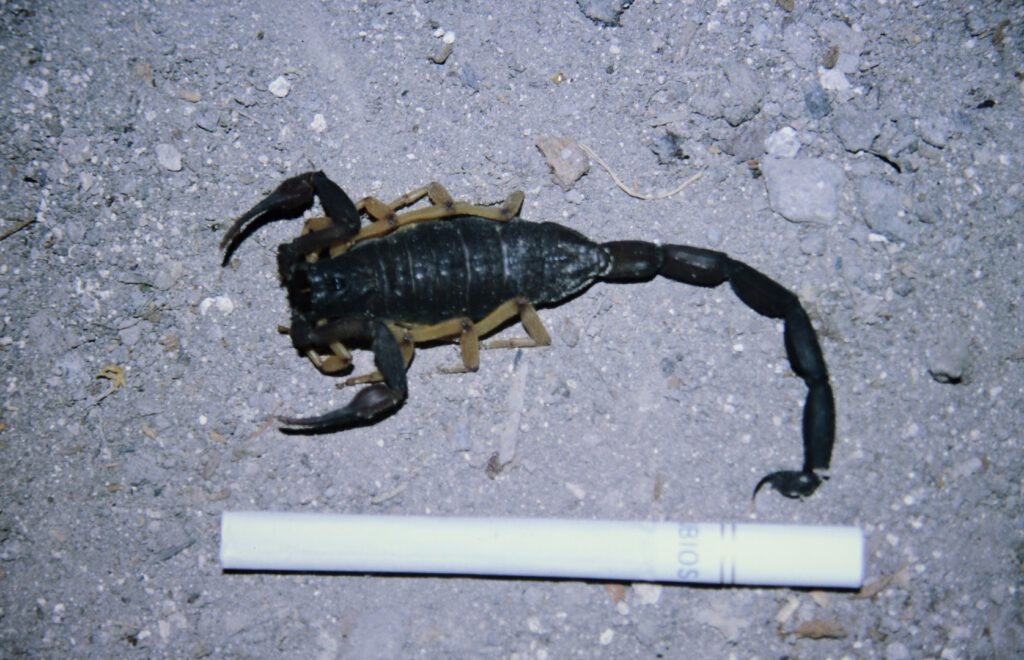

On the way back we passed another lost Maya site: El Tintal. Another large and totally unrestored ruin…
We finally made it back to Carmelita, after stumbling through the jungle again for a few days. I was barely conscious out of exhaustion, but at least we could wash ourselves and brush our teeth again! We camped again in Sebastian’s backyard. I overheard him talking to his wife during the night about using the money we had paid him to start a new life in the United States – a bold plan with 50 US Dollars. The next day we gave him all sorts of hints and allusions that this was not a good idea.
We waited two days in Carmelita to get a lift back, mostly inside the one and only store where we had already bought everything edible and all Coke bottles the owner would sell us. We actually had built a chess board out of the bottle caps to fight the boredom – really nothing happens in Carmelita.

Finally we found some chicleros again who took us back to another village – after driving for several hours, stopping in the middle of nowhere for going hunting and many more strange interruptions. I was glad to be back in civilisation. Then we made our way back to Flores, where I tried to buy new shoes (a difficult endeavour with my European-average shoe size of 9 1/2 (43), which is way too large in Latin America…).
Note from 2024: Meanwhile El Mirador has been restored by archaelogists, who started in 2003 with re-excavation. Apparently La Danta is now clearly visible; read about it here. Still, the hike to reach it seems to be quite adventurous!

